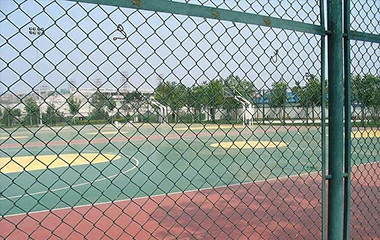 TEL:
+86-13102802206
TEL:
+86-13102802206
 Email:
fencenetting@china.com
Email:
fencenetting@china.com
 Language
Language
 TEL:
+86-13102802206
TEL:
+86-13102802206
 Email:
fencenetting@china.com
Email:
fencenetting@china.com
 Language
Language


Understanding Soffit Mesh Importance, Types, and Applications
Soffit mesh is an essential component in construction and building renovation, playing a crucial role in enhancing the performance and longevity of structures. As a specialized material, it helps protect soffits—typically the underside of an architectural feature such as an arch, balcony, or overhanging eave—providing both functional and aesthetic advantages. This article aims to explore the importance of soffit mesh, its various types, and its common applications in modern construction.
What is Soffit Mesh?
Soffit mesh is a type of screening or netting often made from galvanized steel or other durable materials. It is typically installed in the eaves of a structure to provide ventilation while preventing the entry of pests and debris. This mesh allows for air flow into the attic and roofs, helping to regulate temperature and moisture levels, which is essential for maintaining the structural integrity of the building.
Importance of Soffit Mesh
1. Ventilation Proper ventilation is vital in preventing moisture buildup in attics and roofs. Soffit mesh allows fresh air to circulate while expelling stale air, which helps in controlling temperature and humidity. This is particularly important in climates where heat and moisture can lead to mold growth and wood rot.
2. Pest Control One of the primary functions of soffit mesh is to act as a barrier against unwanted pests, including insects and rodents. Without proper mesh installation, attics may become breeding grounds for pests, leading to potential infestations that can damage insulation and wiring, as well as pose health risks to occupants.
3. Structural Integrity By ensuring proper ventilation and preventing moisture accumulation, soffit mesh contributes significantly to the longevity of roofing materials and the overall structure. This can save homeowners and property managers considerable costs in repairs and maintenance over time.
Types of Soffit Mesh
There are various types of soffit mesh available, depending on the building’s needs and local environmental factors. Some common types include
1. Wire Mesh Made from galvanized or stainless steel, wire mesh is highly durable and resistant to corrosion. It is often used for its strength and ability to withstand harsh weather conditions.

2. Aluminum Mesh Lightweight and resistant to rust, aluminum mesh is ideal for areas where weight is a concern. It is also easy to install and comes in various sizes to fit different soffit designs.
3. Plastic or Vinyl Mesh This type of mesh is resistant to corrosion and offers a cost-effective alternative for those on a budget. However, it may not be as durable as metal options, so it’s essential to consider the specific requirements of the application.
4. Expanded Metal Mesh This versatile option is made by cutting and stretching metal sheets to form a mesh-like pattern. It provides excellent airflow while also being highly resistant to larger pests.
Applications
Soffit mesh is primarily utilized in residential construction but can also play a vital role in commercial projects. Here are some common applications
1. Residential Roofing Most residential homes employ soffit mesh during roofing installations to ensure proper attic ventilation.
2. New Construction In new builds, soffit mesh is typically integrated into the architectural design, ensuring compliance with building codes and enhancing structural integrity.
3. Renovations During renovations, especially in older buildings, installing soffit mesh can greatly improve airflow and reduce moisture build-up, extending the life of the roof and attic.
4. Commercial Buildings Commercial properties require effective ventilation systems to manage large spaces, making soffit mesh an integral part of their construction and maintenance.
Conclusion
Soffit mesh is a critical aspect of modern construction, significantly influencing ventilation, pest control, and the overall durability of buildings. With various types available to suit different needs, it offers a practical solution to many challenges faced by builders and homeowners alike. As awareness grows regarding the importance of quality materials in construction, soffit mesh will undoubtedly remain an indispensable resource for ensuring healthy, sustainable living environments.